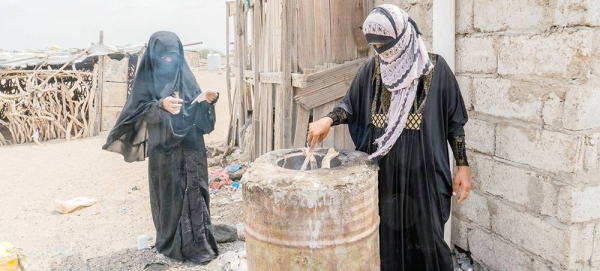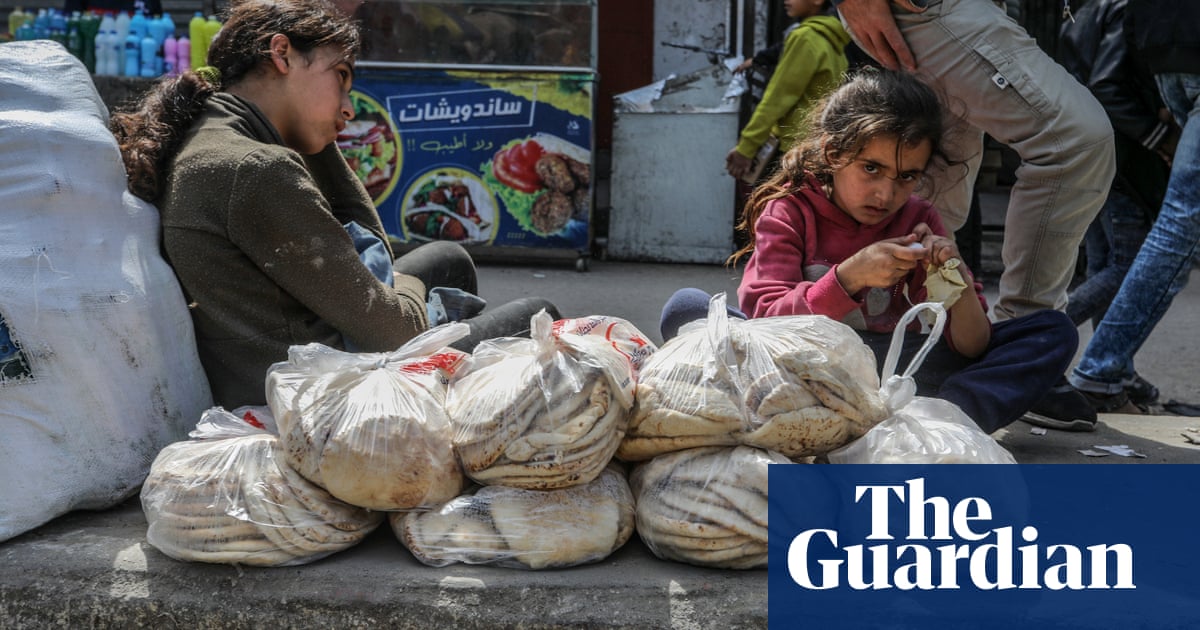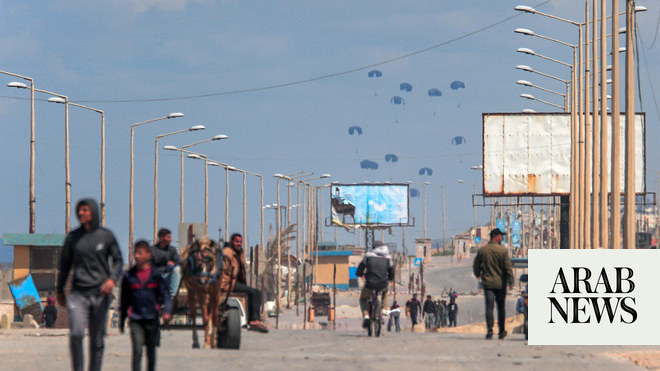
DUBAI: A woman rummaging through garbage for scraps of food; a father pushing his skeletal teenage son in a wheelbarrow searching for help – a tragic snapshot of the daily scenes on Hodeidah’s streets of death.
Millions of Yemenis are on the brink of starvation, and yet enough food to feed 3.7 million of them for a month sits in storage.
Abdulrahman Al-Thorani, a humanitarian activist in the port city of Hodeidah, told Arab News: “Everywhere you look there is tragedy. So many are suffering, it’s hard not to be affected by it. People here are in desperate need of help, they have nothing and are dying every day as a result.”
A mother sits where her children who are suffering from severe malnutrition in Hodeidah. (Photo: Abdulrahman Al-Thorani)
Described by the UN as the world’s worst man-made humanitarian crisis, the situation for 80 percent of the country’s population is at crisis point.
British Foreign Secretary Jeremy Hunt warned on Sunday that a peace process in war-torn Yemen’s Hodeidah “could be dead within weeks” without more committed effort from both sides.
But time is already running out for many as famine and disease takes hold.
British charity Save the Children estimates that 85,000 children under the age of five have starved to death since 2015. (Photo: Abdulrahman Al-Thorani)
With a crumbling economy and infrastructure, millions are without basic necessities such as shelter, medical aid, food and clean water.
Al-Thorani said civilians were in urgent need of help. “People are dying because they don’t have anything to eat. No food, no water.”
They roam the streets scavenging for any food they can get, while others just stay at home and starve to death, Al-Thorani said.
“I found a woman rummaging through the garbage on the streets of Hodeidah trying to find food,” he said.
Hopes were raised when a temporary truce was signed in Sweden in December last year by the Houthis and the Yemeni government, which included the opening of a humanitarian corridor in Hodeidah. The agreement allowed for aid to be distributed in order to prevent widespread famine.
But almost three months after the deal was struck, food and vital supplies still sit in storage units while families continue to starve.
The UN said it had finally been able to access the Red Sea Mills - which has enough grain to feed 3.7 million people for a month - in Hodeidah after a half-year delay.
Dr. Elisabeth Kendall, an expert on Yemen affairs at Oxford University, referred to the Red Sea Mills situation as “a disgrace.”
“The sad reality is that it is not a simple question of countries donating more. It’s more a question of access,” she said.
A woman rummages through the garbage on the streets of Hodeidah trying to find food. (Photo: Abdulrahman Al-Thorani)
An estimated 24 million people – close to 80 percent of the population – need assistance and protection in Yemen, the UN warned this month, with 14.3 million people classified as being in acute need.
Al-Thorani, who has been visiting several homes and unofficial displacement camps in Hodeidah this month, claimed that for every house he visited he found at least three cases of malnutrition or other diseases.
“Disease is widespread, and no one seems to care,” he added.
Al-Thorani said he visited one man who had tongue cancer, but he died shortly after because his family could not get treatment for him.
In another case, Al-Thorani found a father roaming the streets of the city while pushing his 14-year-old son in a wheelbarrow, looking for help. The teenager, who was severely malnourished, was unable to walk due to his condition. Al-Thorani said the boy was also suffering from kidney problems and eye infections.
Norah Borgany, a doctor who works in Al-Thawra hospital in Hodeidah, said although other hospitals in the province were operating, Al-Thawra was the only one that had the facilities to treat people. But fighting between the warring factions had prevented many from being able to reach the hospital for treatment.
“Roads to the hospital have to be cleared so that people in need can come to be treated,” Borgany said.
UN agencies say some 14 million people are at risk of famine in Yemen. (Photo: Abdulrahman Al-Thorani)
Reportedly 10,000 people have died since the start of the conflict in Yemen, but some believe the number is much higher. Data collected by Armed Conflict Location and Event Data Project (ACLED) - an independent group that studies conflicts – shows that at least 60,000 have been killed since 2016, while British charity Save the Children estimates that 85,000 children under the age of five have starved to death since 2015.
Analyst Kendall said that the only way to solve the humanitarian crisis was to end the war.
“Aid is only a band-aid on a gaping wound,” she said, adding that international pressure must remain strong on keeping the two main warring sides fixed on implementing the agreement reached in Stockholm.
However, shortly after the deal was signed, both sides reported violations of the cease-fire. The UN also said it doubted claims by the Houthis that they withdrew from Hodeidah, although the militia group has denied this.
An estimated 24 million people – close to 80 percent of the population – need assistance and protection in Yemen. (Photo: Abdulrahman Al-Thorani)
Reports released at the end of December claimed international aid was often not getting through to civilians because much of it was being diverted to front-line combat units or sold on the black market.
To confuse matters further, the Dutch Maj. Gen. Patrick Cammaert, who had been heading the UN operation monitoring a cease-fire in Hodeida, was replaced by Danish Lt. Gen. Michael Lollesgaard, due to a disagreement with the Houthis.
Houthi negotiator, Mohammed Abdelsalam, wrote on Twitter that his delegation boycotted a meeting with Cammaert because he had steered “from the course of the agreement by implementing other agendas.”
At the start of the month, British politician Hunt began a three-day visit to the Gulf in an effort to salvage the faltering cease-fire. During a meeting in Oman, Hunt told Houthi negotiator, Abdelsalam, that the withdrawal of troops from Hodeidah needed to happen soon to maintain confidence in the Stockholm agreement.
UNICEF says that each day, eight children are killed or injured across 31 active conflict zones in the country. (Photo: Abdulrahman Al-Thorani)
A Yemeni analyst who wished to remain anonymous, said the slow progress on implementing the agreement was down to it being “vague enough for the parties to sign, while they walk away with their own different interpretations of it.”
The analyst also slammed the UN for its “soft” approach on the Houthis. “The UN envoy’s statements are pretty soft on the Houthis and we Yemenis don’t understand why,” the analyst told Arab News.
Hunt visited Yemen on Sunday to tell both sides that failure to implement the Stockholm agreement on the redeployment of forces in Hodeidah to allow access to humanitarian supplies and routes, would very quickly lead to a humanitarian catastrophe that would be hard to come back from.
Meanwhile UNICEF executive director, Henrietta Fore, said in a statement on Saturday that each day, eight children are killed or injured across 31 active conflict zones in the country.
The fact remains that despite an international push to resolve the conflict, the fate of many lies in the hands of a few.












